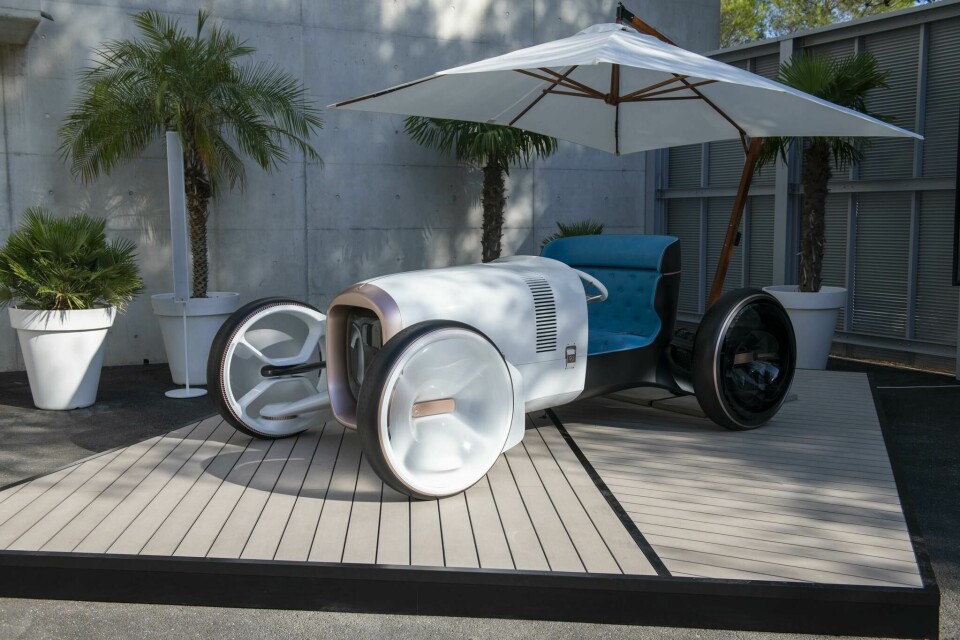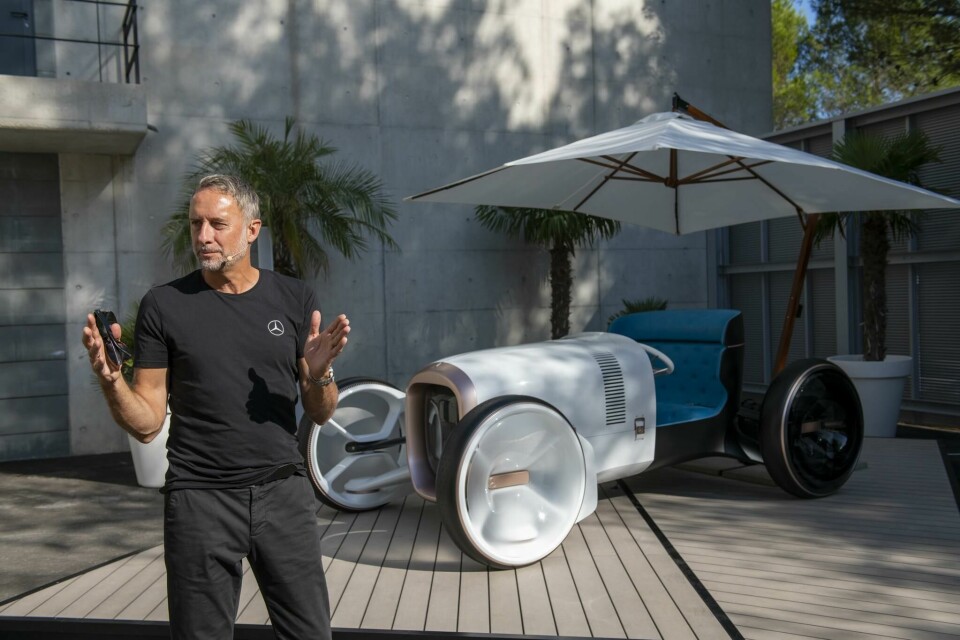
First Sight: Mercedes Vision Simplex
Retro design study evokes a rare neo-vintage charm
To coincide with its newest Advanced Design studio opening in Nice on France’s Cote d’Azur, Mercedes-Benz also unveiled a fun-filled concept in its viewing yard called the Vision Simplex, in hommage to a game-changing car from the past.
1901 Mercedes 35 hp and 1902 Mercedes Simplex
The car it references is the 1901 35hp Mercedes, which dominated Race Week in Nice almost 120 years ago – another neat link to the new studio’s location – and according to Mercedes represented a pivotal moment in the development of vehicle design layout: “It is acknowledged as the first modern car. The transformation, away from a high motorised carriage to a flat vehicle design, with a light high-performance engine installed low down in the frame and a honeycomb radiator integrated into the front, was the role model for all the cars that were to follow, whatever the brand. The vehicle layout presented for the first time over a century ago remains to this day the technical basis of all cars.”

The Mercedes Vision Simplex won’t go down in history in quite the same way, but the concept is nonetheless a breath of fresh air from a brand that in the recent past has sometimes appeared to take itself a little too seriously. On the one hand it offers a shamelessly retro nod to Mercedes’ rich heritage – through design cues like the long-nosed bonnet, the uncovered and freestanding wheels, and even the leather bonnet tie-down straps – but on the other hand it also features very cool and overtly modern references, from its shiny LED-lit grille, to ultra-smooth surfacing and clearly modern fit and finish techniques.
“It’s a tribute to the past with the same footprint as the original, but also about expressing simplicity,” Stefan Kohl, head of Mercedes’ advanced design team explained. “Let’s look at it with a bit of humour. It’s iconic, but a bit of fun too.”
Then Hartmut Sinkwitz, the head of Mercedes’ interior design department, came to the stage in the early evening sun of the Studio’s outside viewing yard, to explain the interior’s equally evocative design details. “We treated the rear bench like a beautiful sofa with Chesterfield-style buttons and a colour inspired by the Cote d’Azur,” he enthused. “The dash is just the inside of the hood with mechanical metal details embedded and projected displays, the steering wheel a piece of art and product design, and the boot just a strapped-on bag.” This approach to luggage capacity is of course where the term ‘trunk’ came from.
The colour and trim combination of satin rose gold accents against glossy white front-end bodywork and wheels, and then black rear wheels and seat back broken up by an azure blue cabin and footwell, is really well judged. Up close the detailing is excellent with subtly repeated references to the brand’s three-pointed star logo, some with the traditional circle surrounding them like the rivets about the bonnet straps, and others – like on the tyre treads and rear bag – without the circle and acting like a Mercedes monogram pattern, as famous fashion brands Chanel, Gucci ad more excel at.
The whole ensemble is a first class combination of nostalgia and modernity, with high-tech and simple controls dubbed by Mercedes’ designers as “hyper analogue”. What’s even more refreshing is that it shows the confidence within the current Mercedes team under chief design officer Gorden Wagener to experiment, be more human and have fun at the same time. “I don’t see Mercedes as a car company but as a luxury brand, with the aim to be the most-loved,” Wagener stated earlier in the day’s presentation. With designs like the Vision Simplex that made all the onlookers that day smile, Mercedes is heading in the right direction. Genuinely charming.

























